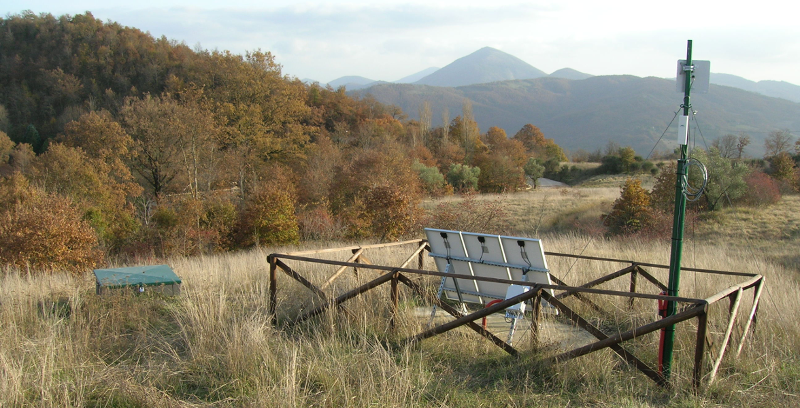The seismic hazard generated by faults slipping in moderate-large earthquakes and the need to mitigate the risk for nearby exposed populations requires scientists to seek a better understanding of the physics of faulting and the near-surface response to earthquake shaking.
The Altotiberina Near Fault Observatory (TABOO) is a research infrastructure of the National Institute of Geophysics and Volcanology (INGV) composed by a dense network of multidisciplinary sensors monitoring at local scale an active normal fault system placed along the Upper Tiber Valley (lat 43.1 : 43.6 - lon 12.1 : 12.8 - Northern Apennines of Italy) and dominated at depth by the Altotiberina fault (ATF).
Scientific rationale
TABOO is dedicated to the study of faults mechanic, earthquakes preparatory phase and the all-suite of active deformation processes occurring along a tectonically active extensional system dominated at depth by the ATF, a NW-trending and E-dipping low angle at 15°-20° normal fault 60km long and 30km width. Such a continuous geological structure is potentially able to generate a seismic event up to MW 7. The absence of events of this magnitude in the historical catalogues, the relatively low strain rates of the area, the ATF geometry considered misoriented with the active stress field (with more than 70° from the 1) and the continuous occurrence of microearthquakes with occasional moderate ones (up to M5.5; Gubbio 1984), poses the Upper Tiber Valley as one of the most interesting natural laboratories for studying the spectra of mechanisms developing along geological faults for accommodation tectonic deformation.
Crustal faults are complex natural systems whose mechanical properties evolve over time. Thus, the understanding of the multi-scale, physical/chemical processes responsible for earthquakes and faulting requires considering phenomena that intersect different research fields (the road of integration). Thus, the Near Fault Observatories (NFO) have been grounded on dense, state of the art networks of multi-parametric sensors that continuously monitor the underlying earth instability processes over a broad time interval.
TABOO monitoring sites have been built at very short distance from each other: mean distance around 5km. In this way, they complement the permanent INGV regional geophysical monitoring networks generally characterized by larger station spacing in the order of tens of kilometres. A true on-site laboratory focus on recording the broadest possible range of signals related to the physical/chemical processes that occur along and around active fault zones, down to very small scales. TABOO high resolution is aimed at tracking the evolution of the ATF fault system, for example through accurate location and characterization of micro-seismicity, the mapping of the aseismic forcing mechanisms such as creeping that may influence further rupture development, and the definition of the diffusive processes associated to fluid migration and fluid-rock interaction. To counter act the difficulty in observing the long-time scale deformation cycle of the large faults, TABOO (and more in general all the NFO) monitor with high resolution all the deformation episodes occurring along the minor faults pertaining to the major system where frequently occur the small events (such as M 3). The high detection capacity of the monitoring infrastructure allows to consider these small events as proper local mainshocks, considerably shortening the seismic cycle. This provides scientists the opportunity to test models and hypotheses on a more robust statistical basis but also to follow the pre-, co- and post-seismic phase of an active fault, even if small (e.g. from hundreds of meters to a few kilometres), with all the related scaling problems. At the same time, the collected information on the geometry and deformation style of the major faults can be used to develop ground shaking scenarios that account for diverse slip distributions and rupture directivity models.

